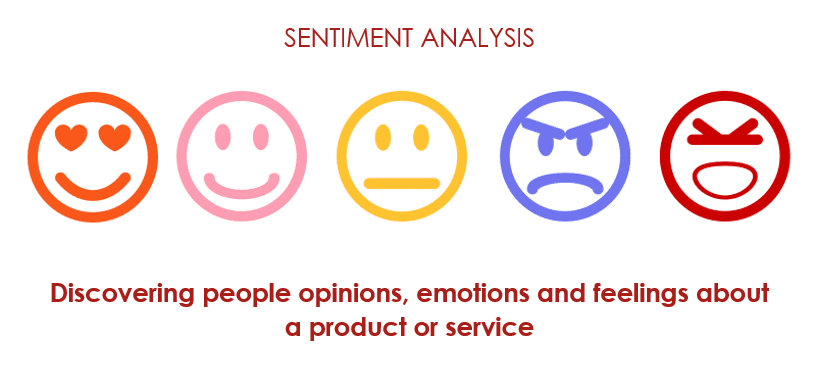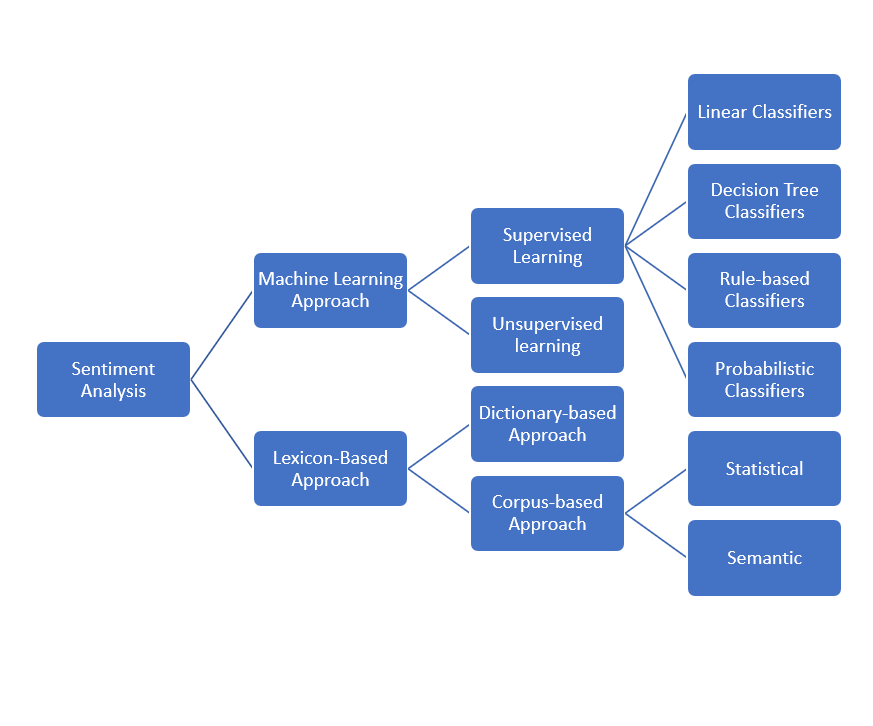Technology is radically transforming the customer journey, making customers more connected and more empowered than ever before. With more than 59% of the world’s population connected via the Internet, customers are now actively voicing out their opinions on social media and other online platforms, leading to an enormous volume of user-generated content. For brands, these immense data provide deep insights into consumer behavioral trends and help companies learn about customer perceptions of their products, services, or events. Here is precisely where techniques such as Sentiment Analysis plays a pivotal role in Market Research.
What is Sentiment Analysis?
Sentiment analysis refers to the use of natural language processing, text analysis, computational linguistics, and biometrics to systematically identify, extract, quantify, and study affective states and subjective information.
In a nutshell, Sentiment Analysis is a text analysis technique that enables interpretation and classification of human emotion and intent within the text data.

Source: https://theprauthority.com/
Need For Sentiment Analysis
Most of the Market Research focuses on quantitative metrics such as market share, market penetration, and SOV. However, there is a gap in performing qualitative analysis that helps in understanding the real pulse of the customers. The real challenge causing this gap is most of the customer-generated data such as social media posts, chat conversations, blog posts, and emails are unstructured data. This type of data is not only hard to analyze and understand but also time and resource consuming.
Sentiment Analysis employs text mining and Natural Language Processing algorithms that analyze unstructured data and derives insights that help businesses in deeply understanding their customers and competitors.
Sentiment Analysis Methodology
Below is the process flow of a generic Sentiment Analysis process

- Data collection
As the Sentiment Analysis leverages vast user-generated content, the raw data from various data sources such as Social Media, Blogs, Discussion Boards, Review Sites, and E-Commerce are collected and stored in a Data Lake. At this point, the data is highly disorganized and unstructured.
- Text preparation
This phase involves the cleaning of the extracted data and prepares it for further analysis. For efficient analysis, irrelevant information such as noise, non-contextual content, metadata, and stop words gets identified and removed.
- Sentiment Detection
Before leading to the next phase, it’s essential to filter the data further for efficient analysis. In this process, all the textual sentences in the dataset get tested for subjectivity. Only the sentences with subjective expressions are retained in the data set for further analysis, whereas the rest are discarded.
- Sentiment Classification
In this phase, the subjective text data gets classified into various sentiment classifications. After sentiment classification, the polarity of the sentiment is detected and determined whether the text expresses positive, negative, or neutral emotion. Broadly, there are three types of sentiment classification algorithms.
- ML-Based: This method uses Machine Learning algorithms, which leverages prediction models extensively trained using pre-existing labelled data.
- Lexicon-Based: This approach uses a dictionary of words in which each word gets mapped with its emotional polarity and sentiment strength. Then, the dictionary is matched with the data to calculate the overall polarity score.
- Hybrid: This method leverages the best of both above. It uses Lexicon-Based algorithms for training the prediction model, where Lexicon is proven to be more efficient. The same prediction models are used to analyze the data using ML for a quicker turnaround.
- Analysis Presentation
Conventionally, the analysis insights were published as standalone reports and graphs. But with the growth in technology to process a large amount of data in real-time, interactive dashboards with detailed data visualization features are currently used.

Application of Sentiment Analysis in Market Research
Sentiment Analysis not only helps businesses monitor their customers’ perception of their brand but also provides valuable market intelligence on the complete ecosystem. The following are some of the secondary market research use cases of Sentiment Analysis.
- Competitor Analysis
Sentiment Analysis not only provides insights about your online reputation but also allows for an understanding of what customers in the target segment think of your competitors. These deep insights help in bridging the gaps in products and services to resonate with the target audience and also aid businesses in staying ahead of the competition.
- Product Optimization
With the development of deep-dive analysis algorithms, it is possible to understand not only the sentiment of the customers towards a product but also the factors, features, and attributes.. Such insights help businesses optimize their offerings and make it attractive to their target segment.
- Brand Monitoring
Brand monitoring is one of the most common applications of Sentiment Analysis. It helps in assessing how a brand, product, or organization is perceived by the public, especially in target segments.
- Customer Experience
An immense amount of customer data such as chat transcripts, voice recordings, and e-mails get generated while customers interact with customer support. Measuring the customers’ reactions in these interactions would give us a clear picture of their level of satisfaction, and also reflects the performance of the support teams.
SetuServ’s VOCIS platform can help businesses perform efficient Sentiment Analysis that helps in a deep understanding of their customers, marker ecosystem, and help stay ahead of the competition.
